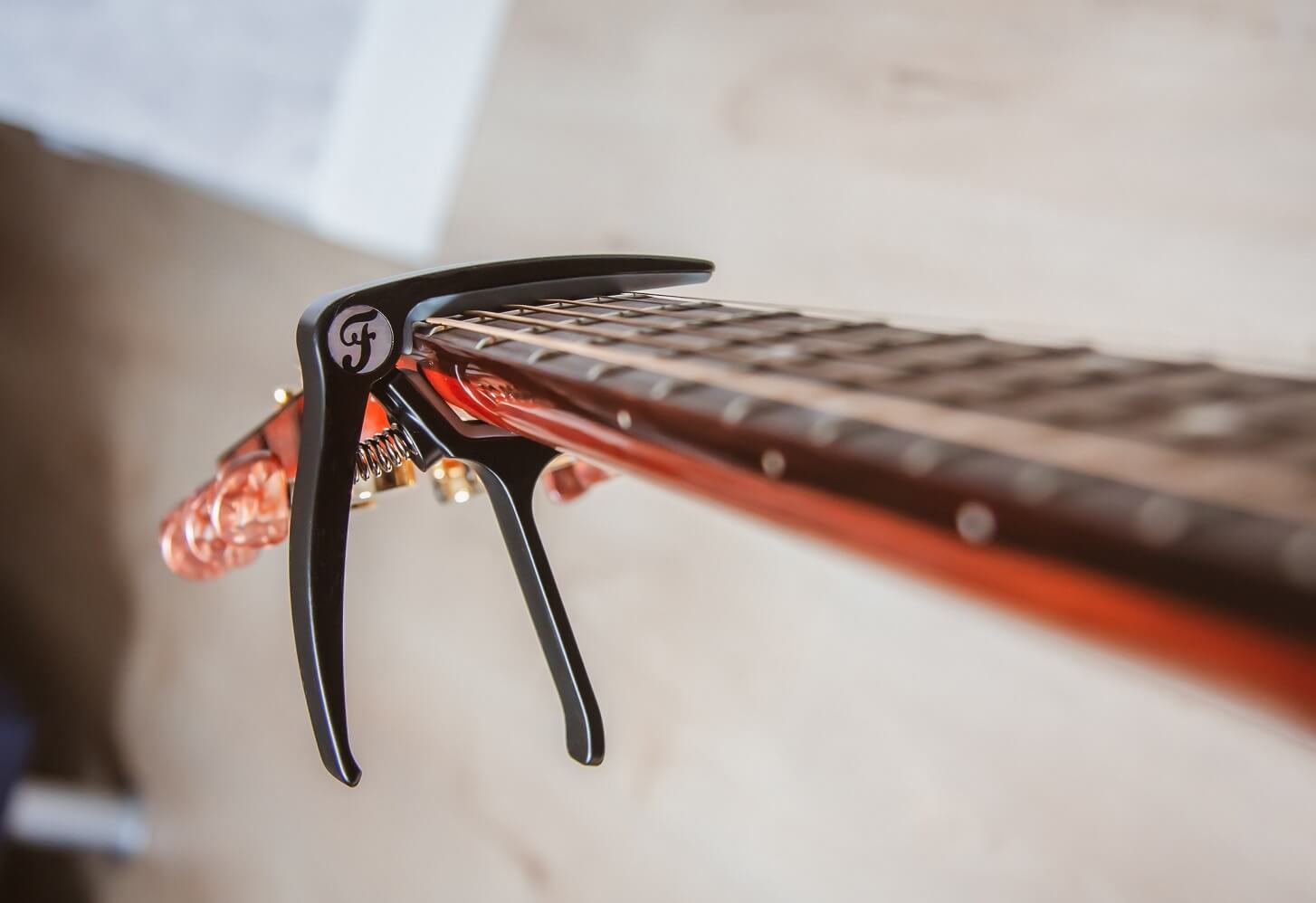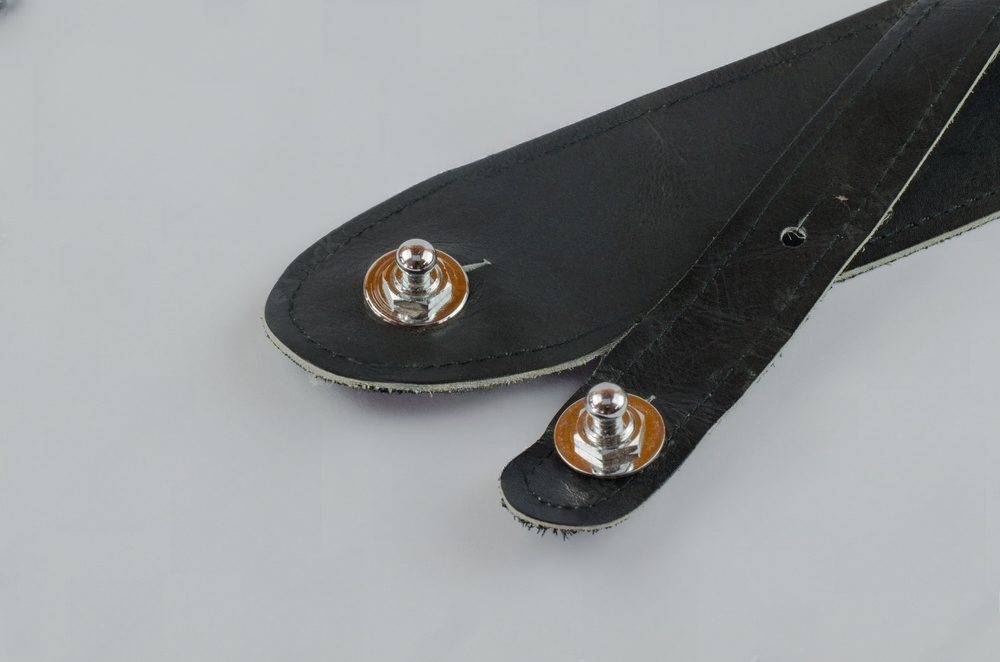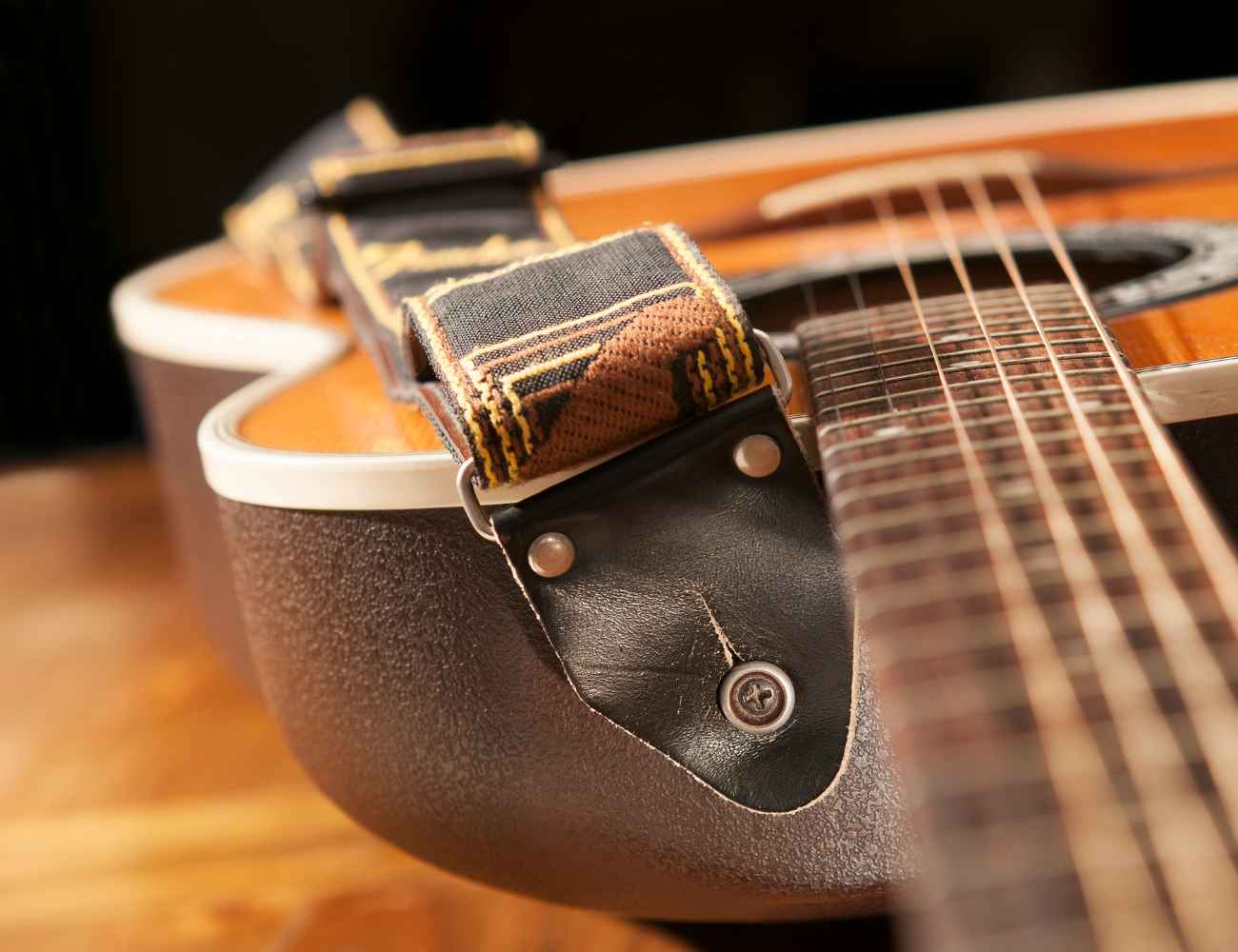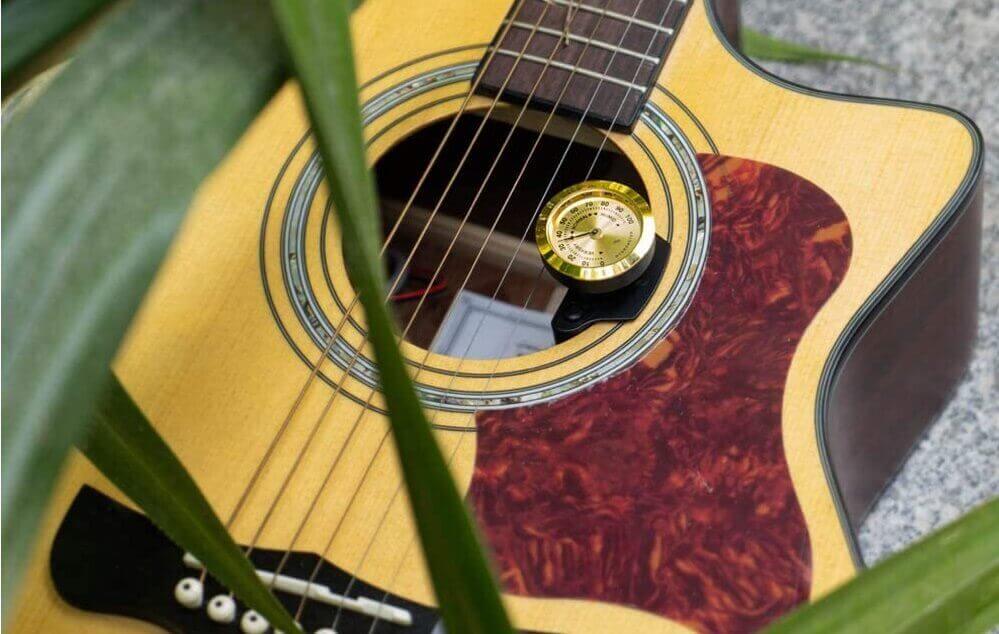What are the best guitar capos?
If you’re a guitarist, then you know that having a good guitar capo is essential.
Not only are they great for changing the key of a song, but they can also help you create different sounds and tones.
But with so many different types and brands out there, it can be tough to know which one is right for you.
In this post, I will be listing the best guitar capos on the market today in terms of quality, durability, versatility, and price, and will also answer some of the most frequently asked questions on this topic.
So, whether you’re looking for the best budget option, the best for beginners, or the best overall, we’ve got you covered.
Without further ado, let’s get started!
Table of Contents
Best Guitar Capos
Summary of all the products that we’ll talk about:
D’Addario Acoustic and Electric Guitar Capo  Micrometer tension adjustment assures buzz-free playing Check Price | |
WINGO Acoustic and Electric Guitar Capo  Thick silicone pad protects your guitar from scratches Check Price | |
Kyser Quick-Change Guitar Capo  One-handed quick-change capo Check Price | |
TANMUS 3 in 1 Zinc Metal Capo  Includes a compact capo, guitar pin puller, and pick holder Check Price | |
Ernie Ball Axis Dual Radius Capo  Available in a variety of finishes to match your style Check Price | |
G7th Performance 3 Guitar Capo  Wrap-around silicone rubber protects your neck Check Price | |
GUITARX X3 Guitar Capo  Made of premium zinc alloy and easily slides between frets Check Price |
D’Addario Acoustic and Electric Guitar Capo
(link to Amazon.com)
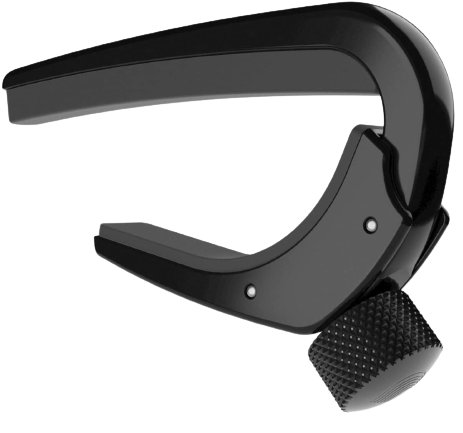
This D’Addario capo is designed for use on both acoustic and electric guitars with radiused fretboards.
Its micrometer tension adjustment assures buzz-free in-tune performance at every fret which is great for those who want clear ringing notes without having to use excessive force.
The capo is made with aircraft-grade aluminum, meaning it can withstand the toughest playing or touring schedule.
It’s also very lightweight, so it won’t weigh down your instrument, it’s available in a classical guitar version, and comes in various color options.
Among many of the options, you’ll find black, silver, metallic grey, and metallic bronze.
Furthermore, the D’Addario guitar capo works for both 6 and 12-string acoustic and is a great choice for beginners and professionals alike.
D’Addario, the company, is one of the world’s largest manufacturers of musical instrument strings and accessories, so you’ll be in good hands with this purchase.
Pros:
- Can be used on both acoustic and electric guitars
- Micrometer tension adjustment assures buzz-free in-tune performance
- Available in a classical guitar version
Cons:
- The knob that tightens can come loose
WINGO Acoustic and Electric Guitar Capo
(link to Amazon.com)

The WINGO guitar capo is a versatile and easy-to-use capo that is perfect for both acoustic and electric guitars.
Made from high-grade aluminum alloy, it is durable and features a thick silicone pad to protect your guitar from scratches or damage.
The built-in spring provides just the right amount of pressure to ensure clear, buzz-free tones.
Also, the included celluloid picks are a nice touch, and the wood finish looks great on any guitar.
With its lifetime warranty, the WINGO guitar capo is an excellent value for the money, if you are looking for a guitar capo that is easy to clip on and off, this is the perfect choice for you.
It has a quick-release button, you can easily change keys during a song without having to remove the capo.
Lastly, not only will this be useful for guitars, but also for your banjo, mandolin, or ukulele.
Pros:
- Suitable for a handful of instruments
- Beautiful rosewood color
- A thick silicone pad protects your guitar from scratches
Cons:
- Could experience some tension lost
Kyser Quick-Change Guitar Capo
(link to Amazon.com)
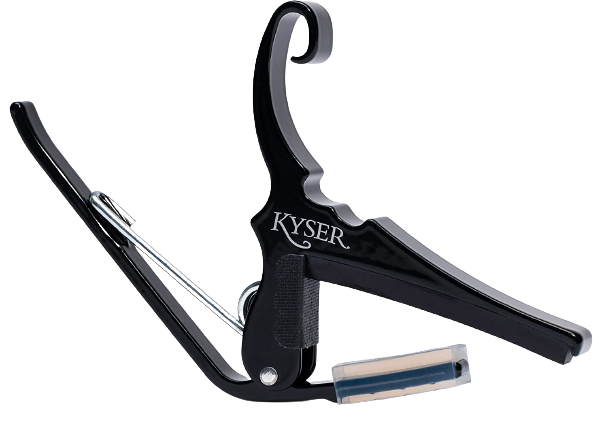
The Kyser Quick-Change Capo is a reliable and easy-to-use tool for transposing the pitch of a 6-string acoustic guitar.
With only one hand needed to operate it, this capo is perfect for both experienced players and beginners alike.
Made from strong and lightweight aluminum, with a steel spring, this capo is made to last and can be easily parked on the guitar headstock when not in use.
On the other hand, it comes in 21 different colors and is made in the USA.
Having the option of choosing between so many colors makes it incredibly easy to match it with the guitar or other accessories you own.
Besides, it is guaranteed for life, which makes it a great option if you are looking for a durable and reliable guitar capo that is meant to be used long term.
Lastly, it weighs only 0.07 kilograms or 0.15 pounds, which makes it incredibly easy to carry around with you.
Pros:
- One-handed quick-change capo
- Multiple colors available
- A lot of positive verified online reviews
Cons:
- Too tight for some people
TANMUS 3 in 1 Zinc Metal Capo
(link to Amazon.com)
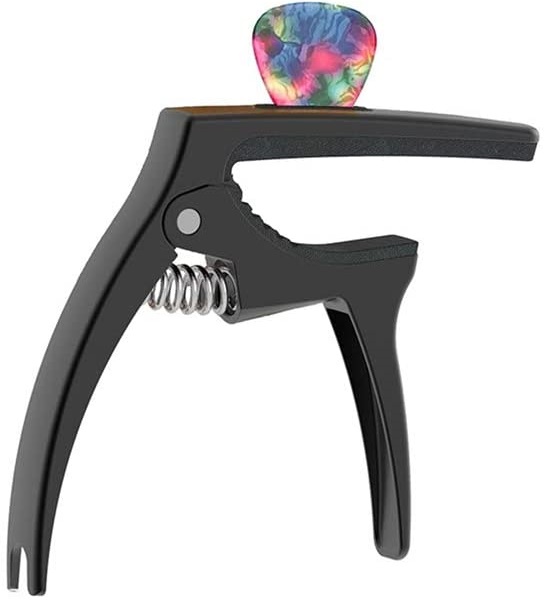
The TANMUS capo is a 3-in-1 device that includes a compact capo, guitar pin puller, and pick holder.
It is designed for easy use and reliable performance, weighing only 2.1 oz or 60 grams, which means it can easily be attached to your guitar without weighing it down
The capo is made of high-quality metal with a brushed spray finish for a beautifully lustrous look.
Its pick holder can hold picks up to 360 degrees, and the bottom is smooth to avoid hand stinging.
On the other hand, this capo also comes with 4 picks in 3 different thicknesses, so you can choose the one that best suits your needs.
The zinc material used for the capo is known for its strength and durability, making this an ideal choice for those who want a long-lasting and reliable product.
Aside from that, the TANMUS capo has a 90-day return refund guarantee!
So, if you are not satisfied with the product, you can always return it and get your money back.
Pros:
- Includes a compact capo, guitar pin puller, and pick holder
- Comes with 4 different picks
- Very lightweight and easy to carry
- Extremely affordable
Cons:
- Included picks are very low quality
- Too small for some fretboards (classical guitars, etc)
- Spring tends to get weak with time
Ernie Ball Axis Dual Radius Capo
(link to Amazon.com)

The Ernie Ball Axis Capo has a precision-molded rubber pad that safeguards your instrument’s finish and is designed to fit both flat and curved fretboards.
It is made from robust, lightweight aluminum and has optimal clamping pressure for buzz-free operation.
This capo is ideal for 6 and 7-string electric or acoustic guitars, and it can also be used on other stringed instruments as well.
It is also available in black, silver, bronze, gold, rose gold, gold satin, blue steel, and pewter finishes.
As a great option for those who want quick and accurate single-handed key changes, the Ernie Ball Axis Capo is an excellent choice for any musician who does live performances or records frequently.
Which is a great alternative to those capos that require two hands to operate.
Having a capo like this is ideal, so I’d say this should also be on your list of potential capos to buy.
Pros:
- Quick and easy single-handed operation
- Available in a variety of finishes to match your style
- Durable and long-lasting
Cons:
- Too bulky to put in your guitar headstock when not in use
- The grip can get softer over time
G7th Performance 3 Guitar Capo
(link to Amazon.com)

The G7th Performance 3 Guitar Capo is a versatile and easy-to-use capo that is perfect for any steel six-string acoustic, electric, or hybrid nylon string guitar.
Its unique tension control system allows you to easily and quickly move the capo from fret to fret, or from guitar to guitar without any adjustment needed.
There’s also a wrap-around silicone rubber that protects your neck from metal to wood contact and safeguards your tone thanks to the firm string pad material that reduces vibration damping.
Additionally, the G7th Performance 3 capo is extremely versatile and can be stored easily on the headstock or just behind the nut when not in use.
It was designed with one-handed use in mind, making it quick and easy to position on the guitar neck.
In addition, this product is very adaptive, as it can match the curvature over the strings in most positions and guitar necks.
Pros:
- One-handed use
- Unique tension control system
- Wrap-around silicone rubber protects your neck
- Quick and easy to position
Cons:
- Lack of pressure could lead to fret buzz
GUITARX X3 Guitar Capo
(link to Amazon.com)
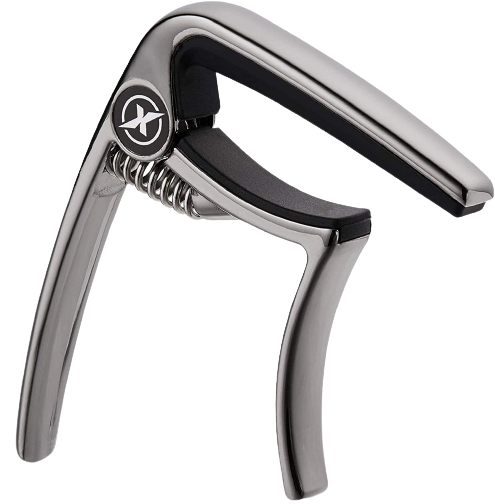
The GUITARX X3 capo is made of premium zinc alloy and is perfect for electric guitars, acoustic guitars, bass, mandolin, ukulele, and banjo.
It is easy to slide between frets to change position and has a high-quality pad that protects your instrument against damage.
The steel spring with internal memory always provides the right amount of tension and the capo stays in tune with a great intonation in all frets.
Also, this same spring looks fairly strong, so the X3 should be able to withstand accidental bumps, scrapes, and a lot of use.
This could be a great choice for beginners out there that are looking for an affordable and dependable capo.
It would also make a great gift idea, and the Glossy Black and Gunmetal color options both look professional and sleek.
In comparison to others on this list, this exact capo lacks extra features, but if you’re looking for a simple, effective, and accurate capo, the X3 should definitely be one of your top choices.
Pros:
- Made of premium zinc alloy
- Easily slides between frets
Cons:
- Very simple in design and function
What to consider before buying a guitar capo?
There are a few things you’ll want to keep in mind before buying a guitar capo.
In this section, we’ll go over a few of the most important factors to consider:
1. Type of capo
The first thing you’ll want to consider is the type of capo you want.
There are two main types of guitar capos: trigger and strap.
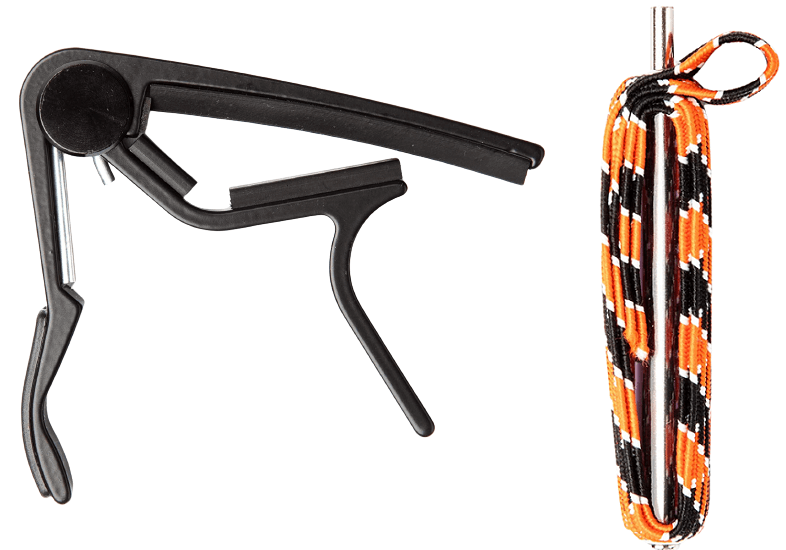
Trigger capos are the most common type of guitar capo since they’re easy to use and can be adjusted with one hand.
Strap capos are less common, but they’re often preferred by professional guitarists.
They also provide a better grip, which is why some people prefer them and can be helpful if you’re playing for long periods of time.
2. Material
The next thing to consider is the material of the guitar capo.
Each material that you’ll find has its own benefits and drawbacks.
Most guitar capos are typically made out of plastic or metal.
Plastic is the most common type of material since it’s lightweight and inexpensive, however, it’s not as durable as metal or rubber.
Metal capos are more expensive, but they’re also more durable and often preferred since they offer a more consistent sound.
3. Extra features
Some guitar capos come with extra features that can be helpful, such as built-in tuners or metronomes, pick holders, or even phone holders.
These features are great if you want an all-in-one device, but they’re not necessary.
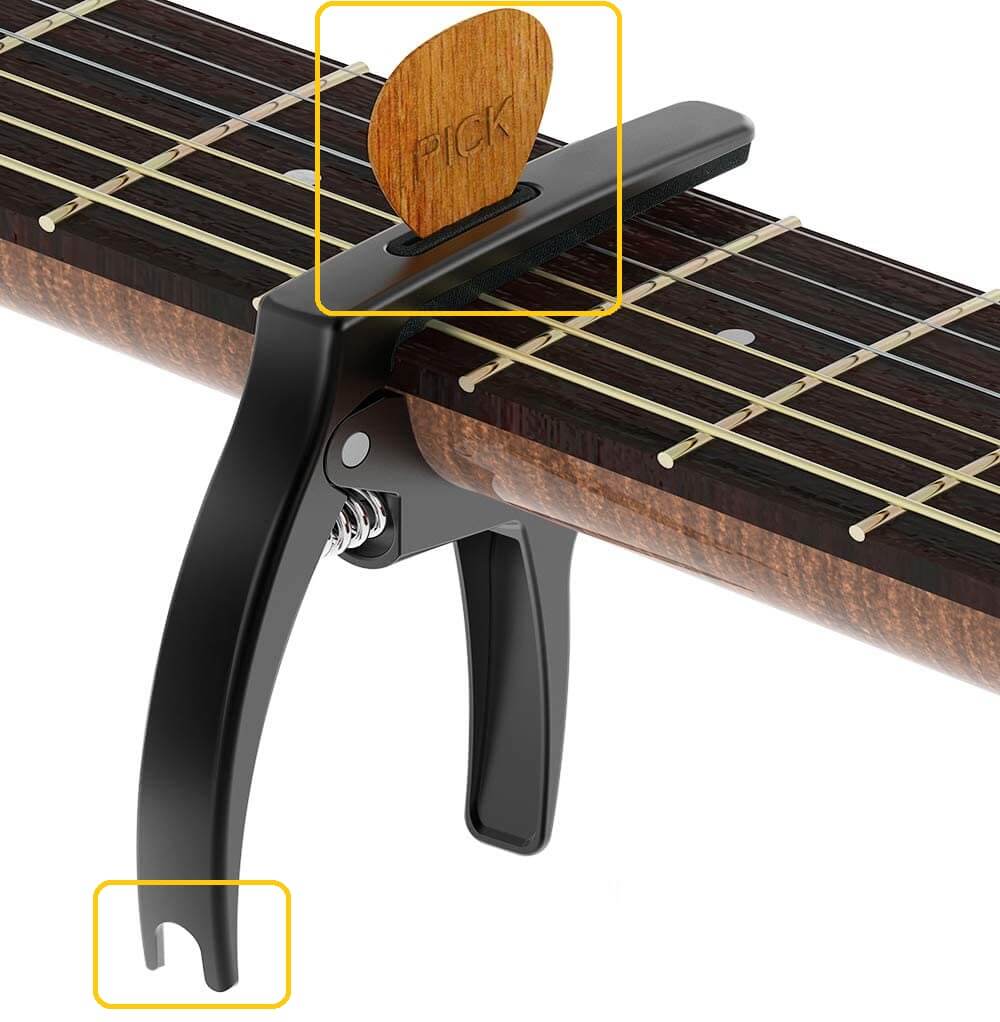
You’ll usually have to pay more for a guitar capo with extra features, so it’s up to you whether or not they’re worth the extra cost.
If you’re just looking for a basic guitar capo, you can find one for around $10.
However, if you want a guitar capo with extra features, you’ll likely have to pay $30 or more.
4. Spring tension
Another thing that most people don’t think about is the spring tension.
The spring tension is what keeps the guitar capo tight on the fretboard.
If the spring tension is too high, it can make the capo difficult to use.
If the spring tension is too low, the capo may not stay in place and will make it difficult to keep the strings in tune and in place.
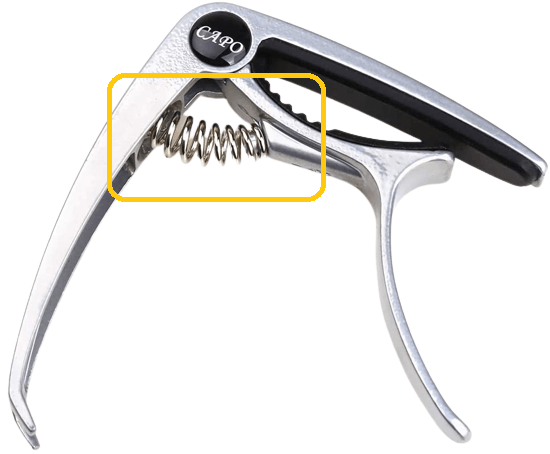
The best way to find the right spring tension is to try out a few different capos and see which one feels the best.
Most guitar capos have an adjustable spring tension, so you can find the perfect setting for your needs.
There isn’t any real way to determine the perfect spring tension without trying out a few different options yourself.
5. Fretboard radius
Your guitar’s fretboard radius is the curvature of the fretboard.
It’s important to consider the fretboard radius when choosing a guitar capo because you want to make sure the capo will fit snugly against the fretboard without causing any issue.
If you’re not sure what your guitar’s fretboard radius is, you can usually find out by looking at the specs or by searching for it online.

The most common fretboard radius is 10″, but there are also 8″, 9″, and 12″ options available.
When choosing a guitar capo, you’ll want to make sure to get one that’s compatible with your guitar-specific fretboard design.
6. Guitar neck dimensions
The neck of your guitar is another important factor to consider when choosing a guitar capo.
This alone can dictate the size of the capo you need.

If you have a wide guitar neck, you’ll need a larger guitar capo, otherwise, if you have a narrow guitar neck, you’ll need a smaller guitar capo.
The best way to determine the neck size of your guitar is to measure it with a tape measure.
Once you have the measurement, you can compare it to the dimensions of different guitar capos to see which one will be the best fit.
7. Ease of use
There’s probably one real way of finding out how easy a guitar capo is to use, and that’s to try it out for yourself.
The best way to do this is to go to a music store and try out a few different guitar capos.
Get a feel for how they work and see which one you like the best.
Some have a knob that must be used to turn to tighten or loosen the capo, while others have a lever that you push down.
There’s no right or wrong way to use a guitar capo, it’s all about what feels best for you.

Having a capo that’s easy to use is especially ideal for those of you who plan on playing in front of people, or in a band setting.
The last thing you’d want in that situation is have everybody wait for you to change your capo position.
Remember that a few seconds in such circumstances can feel like an eternity,
8. Price
The price of a guitar capo can range from $5 to $50, depending on the brand, quality, and features.
If you’re just looking for a basic guitar capo, like I said before, you can find one for around $10.
Here are some examples of guitar capo prices examples on Amazon:

As you can see there’s an option in every price range possible.
However, if you want a guitar capo with extra features, like a built-in metronome or pick holder, you’ll likely have to pay more.
It’s up to you how much you want to spend on a guitar capo, but keep in mind that the more you’re willing to spend, the better quality and features you’ll get.
9. Brand
There are a few different companies that make guitar capos, some of the more use better materials and craftsmanship than others.
If you’re looking for a high-quality guitar capo, you’ll want to stick with a company that’s known for making quality products.
Something to be careful of is companies that make knock-off products.
These are usually made with cheaper materials and come from China.
They may look the same as the real product, but they’re not going to last as long or work as well.
To avoid getting a knock-off product, only buy from a reputable dealer.
10. Warranty
When buying a guitar capo, it’s always a good idea to find one that comes with a warranty or guarantee.
This way, if there are any issues with the guitar capo, you can get it replaced or fixed without having to worry about the cost.
Most guitar capos come with a one-year warranty, but some companies offer longer warranties of up to five years.
The more expensive the guitar capo, the longer the warranty is likely to be.
Likewise the more time a company gives as a warranty, the more confident they are in their product.
11. Reviews
Lastly, before making a purchase, it’s always a good idea to read reviews from other customers.
This way, you can get an idea of what others think of the guitar capo and whether or not they would recommend it.
Be sure to read reviews from multiple sources, as some companies may pay for positive reviews.
The best way to find honest reviews is to look on forums or sites like Amazon:

When looking at reviews, pay attention to both the positive and negative ones.
Also, keep in mind that some people may be more critical than others.
With all this being said, the final decision is up to you.
Why should you use a guitar capo?
The answer to this question depends on many factors such as how frequently you plan on using the capo, what type of guitar you have, and what style of music you play.
That being said, there are a few key reasons why someone might opt to use a capo:
1. To make playing certain chords easier
If you’re just starting out on guitar, or if you’re having trouble forming some chords, using a capo can make life a lot easier.
Especially if you’re a beginner that struggles with barre chords, a capo can be placed on the fretboard to make forming those shapes much simpler.
Doing this prevents you from having to press down on all 6 strings at once, which can be quite difficult for those just starting out.
Furthermore, if you’re planning on playing a lot of songs in a particular key, using a capo can make it so that you only have to learn a handful of chord shapes in one position instead of the entire fretboard.
2. To change the sound of your guitar
If you’re looking for a way to change up the sound of your guitar without having to buy a new one, using a capo can be a great option.
Placing a capo higher up on the fretboard will result in a brighter, twangier sound.
On the other side, placing it lower down will give you a deeper, more resonant tone.
This can be especially useful if you’re playing with a band and need to stand out from the rest of the instruments.
3. To make playing in a higher register easier
If you’re having trouble playing in a higher register, or if you just want to play songs in a different key a capo is the way to go.
This is useful if you want to reuse a lot of the chords that you already know.
By placing the capo higher up on the fretboard, you effectively raise the pitch of every string, making it easier to play those same chords in a higher position.
4. To add tension to slackened strings
This isn’t usually the case, but it can be a reason to get a guitar capo.
If your guitar’s strings have become slackened over time, or if you just prefer a tighter feel, using a capo can help add some much-needed tension.
By placing the capo higher up on the fretboard, you’ll be effectively shortening the length of the strings.
Doing this in turn will add more tension and make them easier to play.
5. To have way more fun
Ultimately, using a guitar capo is all about experimentation and having fun.
There’s no right or wrong way to use one, so feel free to experiment and see what sounds best for you.
As guitarists, we tend to get stuck in our ways and play the same old things.
But by using a capo, we can open up a whole new world of possibilities and explore new sounds.
If you’re looking for motivation to practice, or if you’re just looking for a way to change up your sound, using a capo is a great option.
How to adjust the guitar capo to avoid buzzing?
There are a few things you can do to avoid buzzing when using a capo on your guitar.
One of them is making sure that the capo is tightened properly on the guitar neck and as close to the fret metal as possible.
If it is too loose, it will cause the strings to buzz.
Second, check the action of your guitar, if the strings are too high off the fretboard, it can cause more buzzing than it should.
This is because when you place a capo on the guitar neck, you’re effectively lowering the height of the strings.
So if they were already too high, to begin with, the capo would have to do more work to keep them from buzzing.
Lastly, what I normally do after I place a capo is that I apply a little pressure on the first and sixth string with my left hand while I pluck the string with my right hand.
Doing this would help the capo grip the strings better and I would be checking each string to see if they’re sounding clear or if there’s any buzzing going on.
You should definitely watch this YouTube video by Stephen’s Music Room:
He goes over a few tips to make your guitar sound good when using a capo and how to avoid string buzz.
One of the things that he mentions, which we also just talked about before, was that you shouldn’t put your capo in the middle of the fret.
This is a common reason why your strings buzz when using a capo, and it can easily be prevented.
Just make sure that your capo is as close as possible to the fret metal, just enough that the strings touch it.
Should beginners use a guitar capo?
There isn’t really a definitive answer to this question since it ultimately comes down to personal preference.
Some guitar players feel that using a capo helps them learn songs more quickly, while others find it to be a hindrance.
If you’re just starting out, we recommend trying both approaches and seeing which one works better for you.
For beginners, in particular, a guitar capo can be a helpful tool for playing chords in different keys.
By using a capo, you can play a song in a higher or lower key without having to relearn the fingering for each chord.
This can be especially useful if you are trying to sing along with a recording of a song that is in a different key than your own voice.
Additionally, using a capo can help you to practice forming chords without having to worry about the correct fingering.
However, it is important to note that you will eventually need to learn how to form chords without using a capo.
Otherwise, you may find yourself limited in your ability to play songs on different keys, and more importantly, you will be unable to play barre chords.
Barre chords are an essential part of guitar playing, and you will need to learn how to play them eventually.
That being said, if you’re just starting out, using a capo can be a helpful way to make the learning process a little bit easier.
Is there any distinction between acoustic and electric guitar capos?
No, there is no distinction between acoustic and electric guitar capos.
Capos are simply devices that are used to change the pitch of the strings on a guitar.
They can be used on any type of guitar, and they do not require any special equipment or setup.
All you need to do is place the capo on the neck of the guitar and tighten it until the strings are tight.
There are many different types of capos available on the market, and they come in a variety of sizes and shapes.
One thing that you must be careful with, though, is the size of the fretboard and neck on your guitar.
Make sure that the capo you purchase will fit snugly on your fretboard and not slip off while you are playing.
As a rule of thumb, buying capos that fit acoustic guitars will fit most electric guitars as well, but the other way around is not always the case.
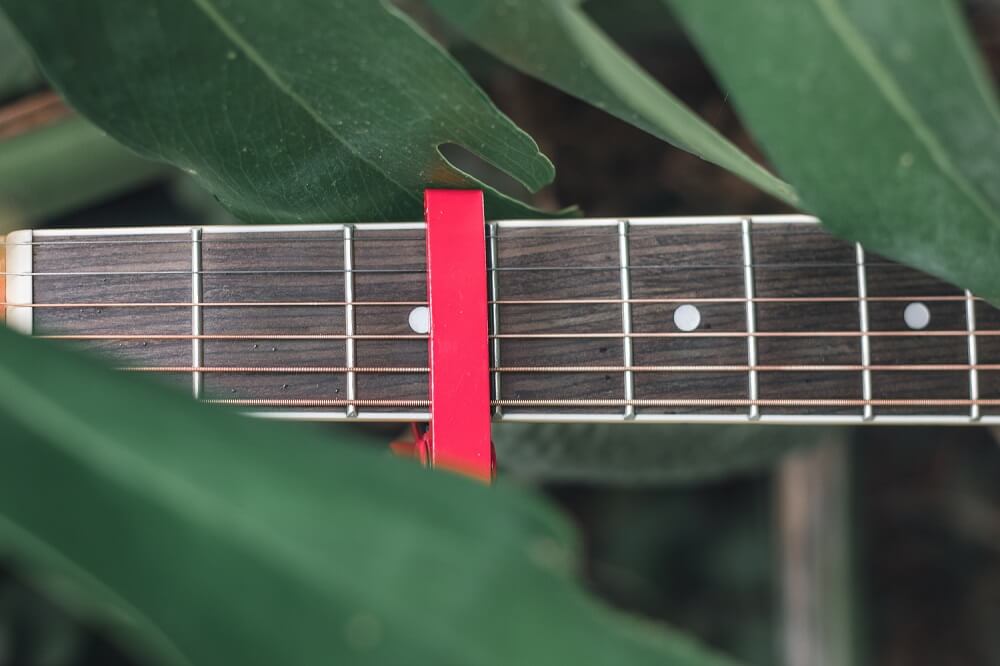
This is because acoustic guitars tend to have wider necks and fretboards than most electric guitars.
But making sure that it fits an acoustic guitar, you’ll essentially confirms that the capo can work on any electric guitar as well.
Can a guitar capo damage the finish of the neck?
Yes, a guitar capo can damage the finish of the neck if it is not applied correctly.
If the capo is too tight, it can cause the finish to crack or chip!
Now if the capo is applied unevenly, it can also cause the finish to become damaged on some parts rather than others.
Cheap capos are notorious for this because they are often made from lower-quality materials that can easily damage your guitar’s finish.
On the other hand, cheap guitars with poor quality control are also more prone to having issues with their finishes.
So it’s important to consider both factors when determining whether or not a guitar capo can damage your instrument.

In general, it is best to avoid using a guitar capo on a finish that is already in poor condition.
Applying a guitar capo correctly should not damage the finish of the neck, but it’s always best to be on the side of caution.
One thing you can do to protect your guitar’s neck finish is to never slide a capo up or down the neck while it is on the guitar.
Always remove the capo before moving it to another position on the fretboard.
Regularly checking the condition of your guitar’s finish is also a good idea, so you can catch any damage early on and take steps to prevent it from getting worse

More than 10 years of experience playing and writing about guitars! When not writing, I can be found strumming away some Johnny Cash tunes. Favorite all time guitar is the Gibson Les Paul. #TeamGibson

